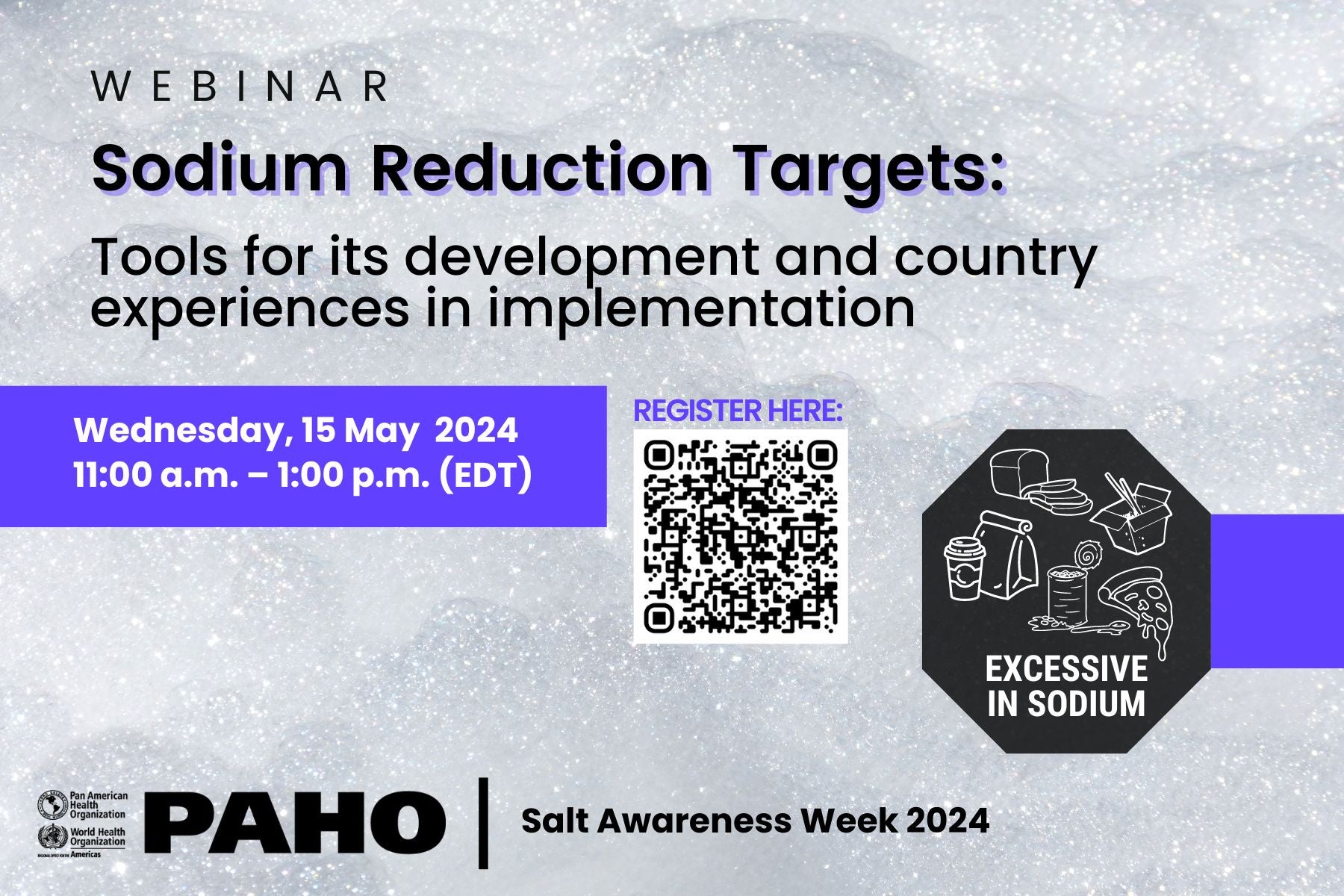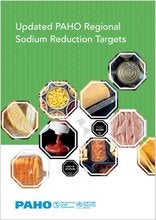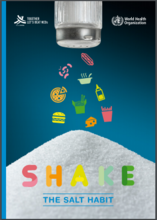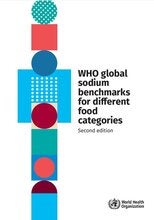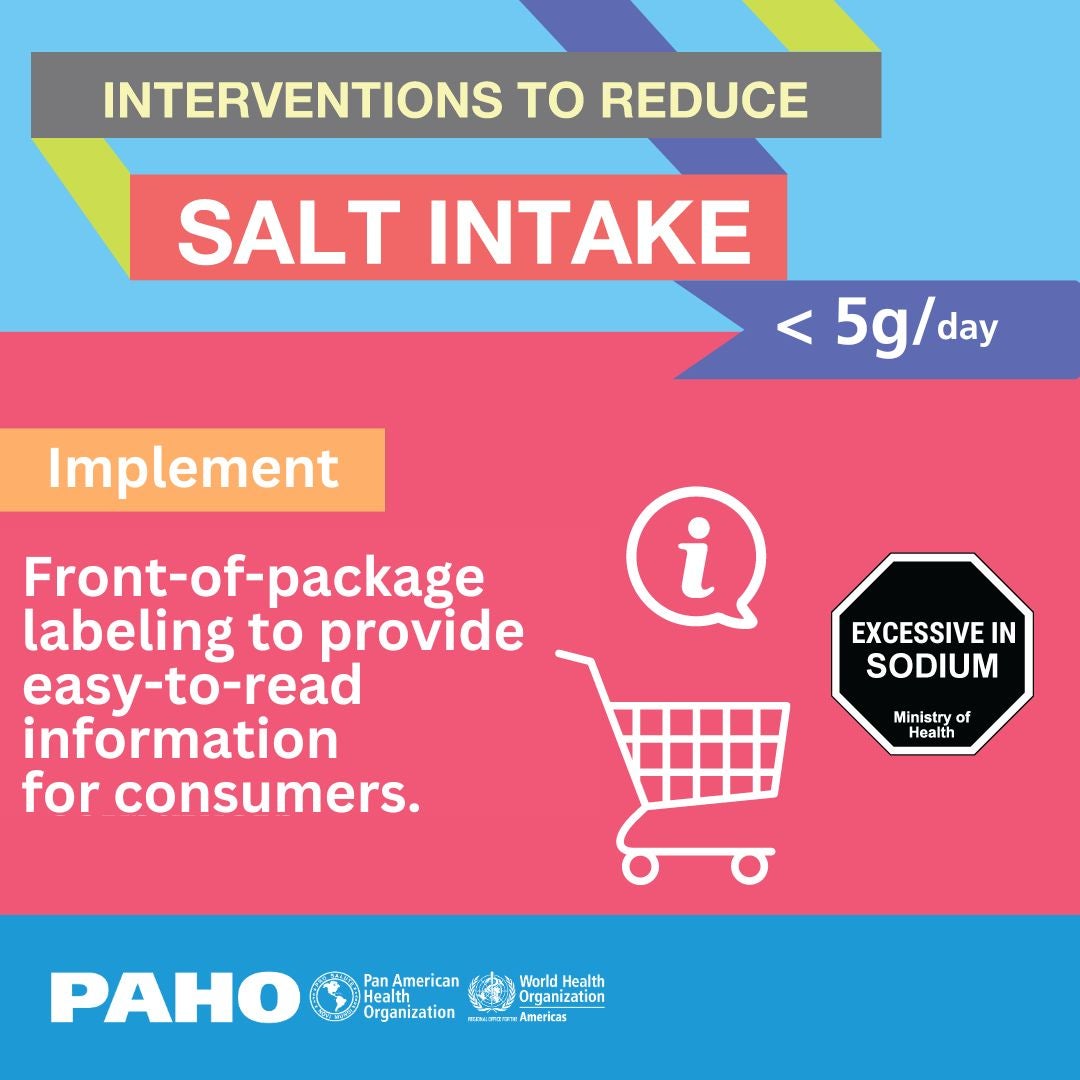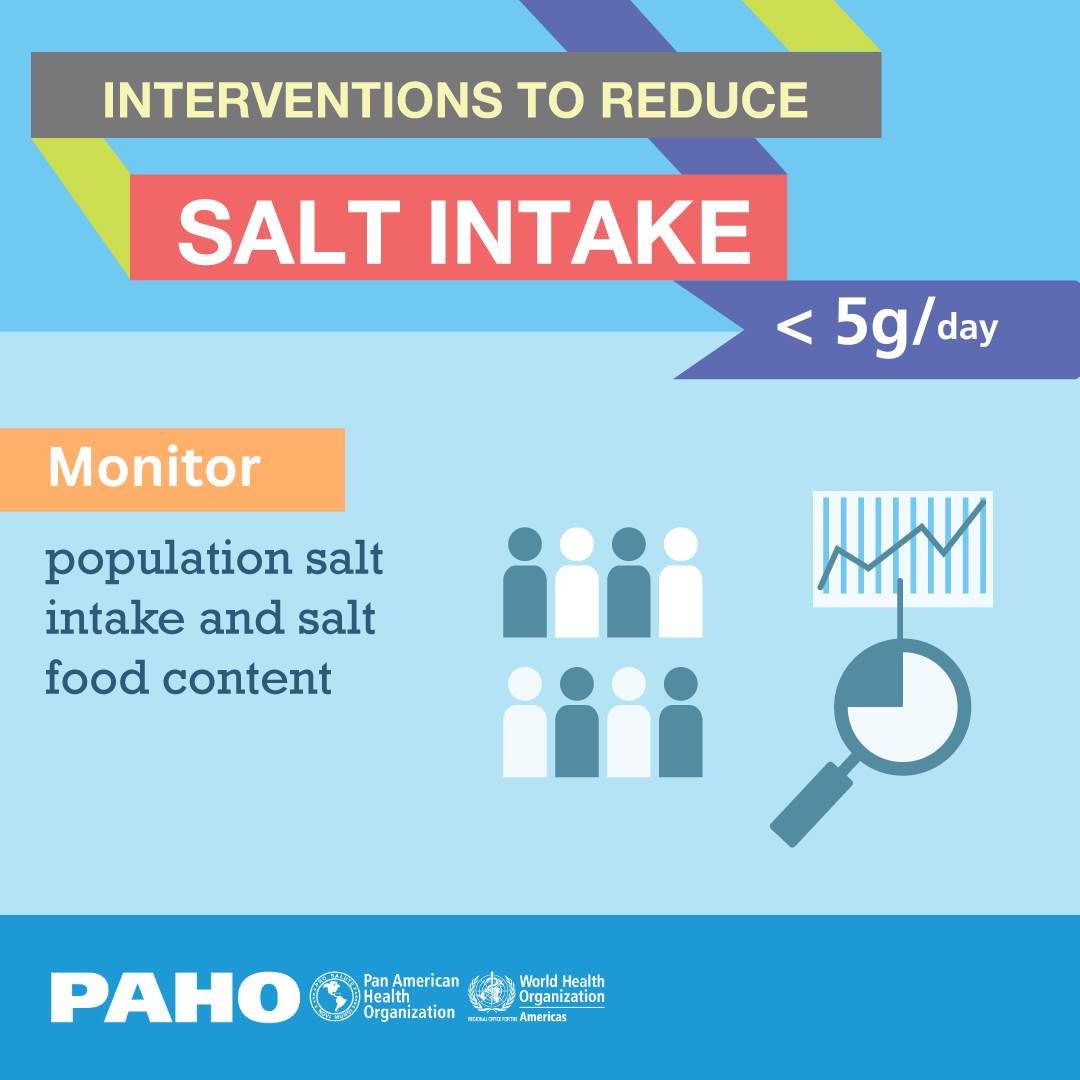That excessive consumption of salt/sodium adversely affects blood pressure is irrefutable. The WHO recommends consuming less than 5 g/ salt (< 2 g of sodium) per adult daily from all sources. Salt/sodium consumption in the Region of the Americas is well above the recommended limit, and the WHO estimates that the mean population salt intake in adults aged 25 years and more is 8.5 grams per day, which far exceeds the physiological requirement and is 1.7 times higher than the WHO recommendation. The WHO launched the SHAKE technical package, recommending the implementation of a series salt/sodium reduction interventions, aiming a 30% relative reduction in mean population intake of sodium between 2010 and 2025.
The reduction of salt/sodium consumption is one of the most cost-effective interventions to prevent hypertension and CVDs. The interventions to achieve it include:
1. Reformulate food products to contain less salt/sodium and set target levels for the amount of salt/sodium in foods and meals in a mandatory fashion.
2. Establish a supportive environment in public institutions, such as hospitals, schools, workplaces, and nursing homes, to enable the provision of lower-sodium options.
3. Behavior change communication and mass media campaigns to raise awareness on salt consumption reduction.
4. Implementation of standards for front-of-pack labeling and marketing restrictions.
5. Surveillance: Measure salt/sodium population intake, salt/sodium food content, and salt/sodium dietary sources.
RESOURCES
For more information, please visit our updated PAHO Regional Sodium Reduction Targets website.


